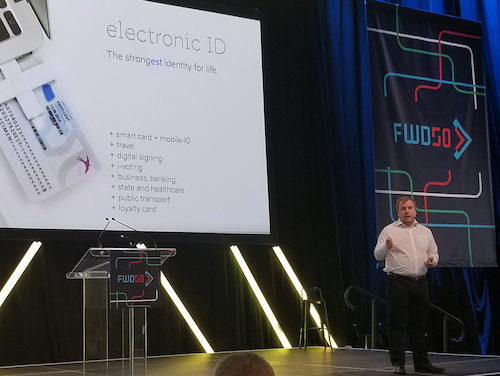Owning a .ee - why I Chose to Start a European Company
on
 I have to say that historically, I haven't had a good reason to think much about Estonia. It's just the first of the Baltic countries that we covered in history class in high-school. It wasn't until the FWD50 conference in Ottawa where this really shifted.
I have to say that historically, I haven't had a good reason to think much about Estonia. It's just the first of the Baltic countries that we covered in history class in high-school. It wasn't until the FWD50 conference in Ottawa where this really shifted.
Siim Sikkut spoke about Estonia building up a digital government from the ground up. The contemporary Estonian government started only 1992, shortly after the WWW started. There were some bold leaders who decided to start not with what other countries had done, but to start digital. He mentioned e-Residency & the ease of starting a new business and I was intrigued.
I already own a digital business, so didn't sign up right away. I think that proximity generally is a bigger factor for our clients than nationality. I am still not sure what the financial opportunities of owning a European company are.
Reading about Estonia's X-Road, I got a sense of how citizens trust government. It is inspiring to see how much access Estonian citizens have to see and manage their own data. It is also amazing to see that Estonian citizens have the right to see who is looking at their file (in real time). It was interesting to see a small country experiment with creating "government as a platform".
I'm one of the co-founders of Civic Tech Ottawa. As an open source advocate, I have been watching the movement of both the open data and open government. Estonia's example kept coming up in discussions of countries that are doing it right. As far as principles for digital government, I was very impressed with the D5 Charter. The Digital 5 (D5) was Estonia, Israel, New Zealand, South Korea & the United Kingdom.
It was shortly after Canada joined (with Uruguay) signed the Charter it became the Digital 7 (D7). This made it real for Canada. Scott Brison put his political weight into shaping a Digital Government of Canada. Learning more about the Estonian system became much more important.
So I signed up to become an e-Resident, got my ID card at the Embassy and logged in to explore what I could of the X-Road. There's not much you can do as an e-Resident, so I decided I needed to also spin up an Estonian company. It wasn't quite as simple as I had been lead to believe. In part this was because I needed to secure a physical Estonian address.
Exploring their system I learned a bit about how the Estonian eID securely connects people to organizations. I needed to use the same card and process to login to several government sites. I also used it to verify that I am an Estonian e-Resident when registering OpenConcept.ee.
I could see first hand how the Estonian model leveraged open source and open standards. As a long time Drupal user I was very happy to see how much this open source CMS is being used in Estonia. Most government departments are using a common base. This allows them to have a consistent look/feel.
It also allows them to invest in common infrastructure to innovate on. With Drupal, they can leverage the community for security, accessibility & multi-lingual delivery. This allows real innovation, focusing on building a consistent secure eID infrastructure.
By focusing on the principles of the D5 Charter I do see a lot of opportunities. The individual technologies will change over time, but the foundation is open source and open standards. If sharing and learning remain key, then governments may one day be real contributors to the open web.
Share this article
About The Author
Mike Gifford is the founder of OpenConcept Consulting Inc, which he started in 1999. Since then, he has been particularly active in developing and extending open source content management systems to allow people to get closer to their content. Before starting OpenConcept, Mike had worked for a number of national NGOs including Oxfam Canada and Friends of the Earth.



